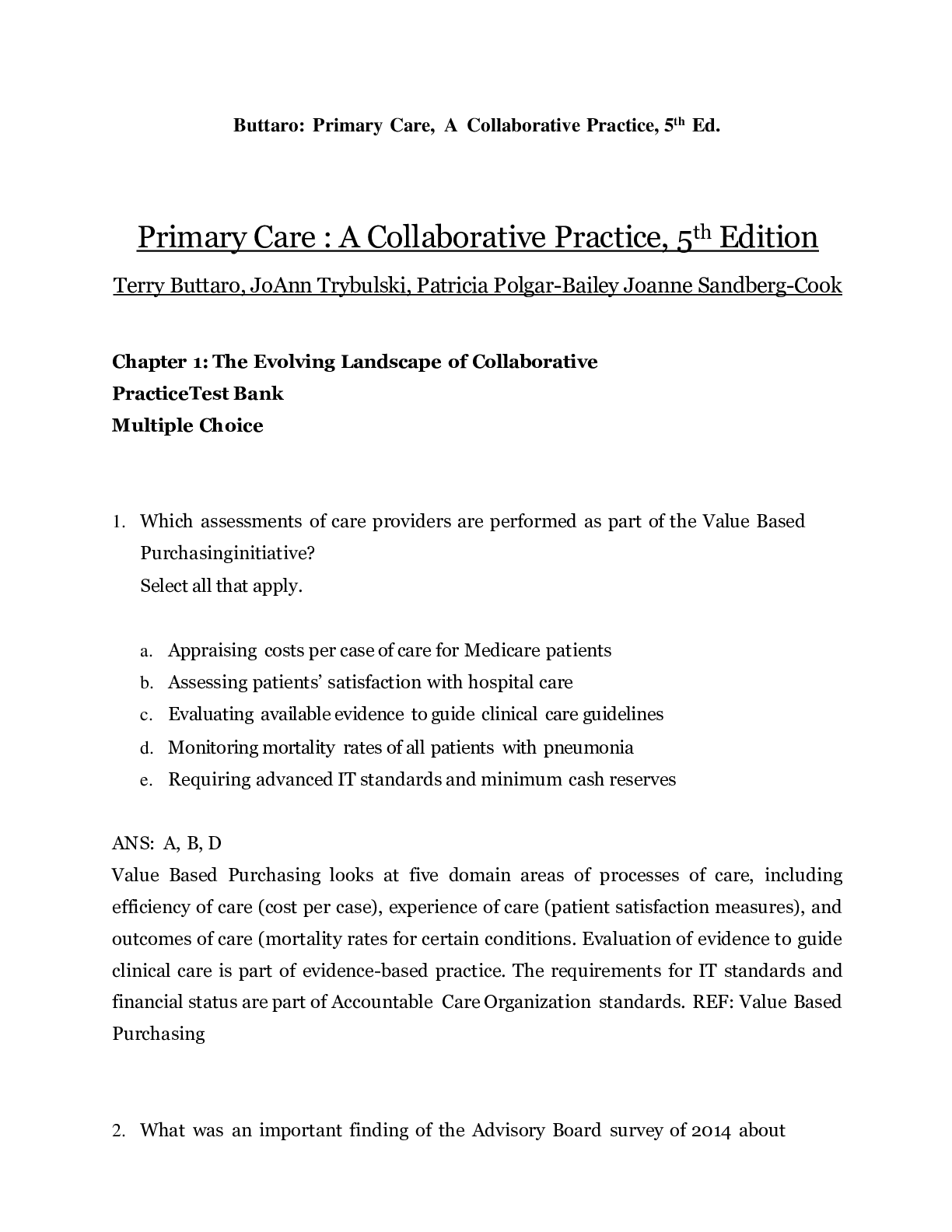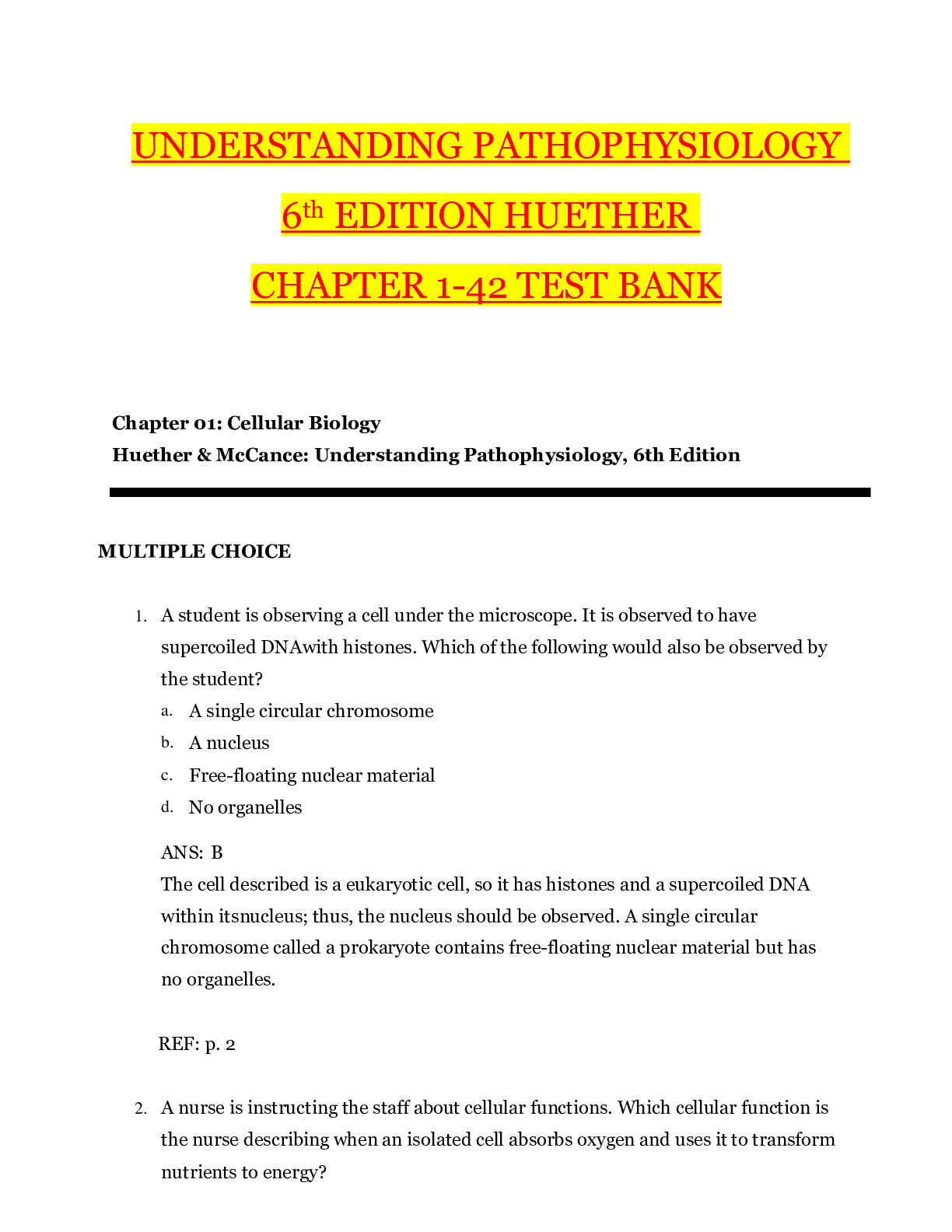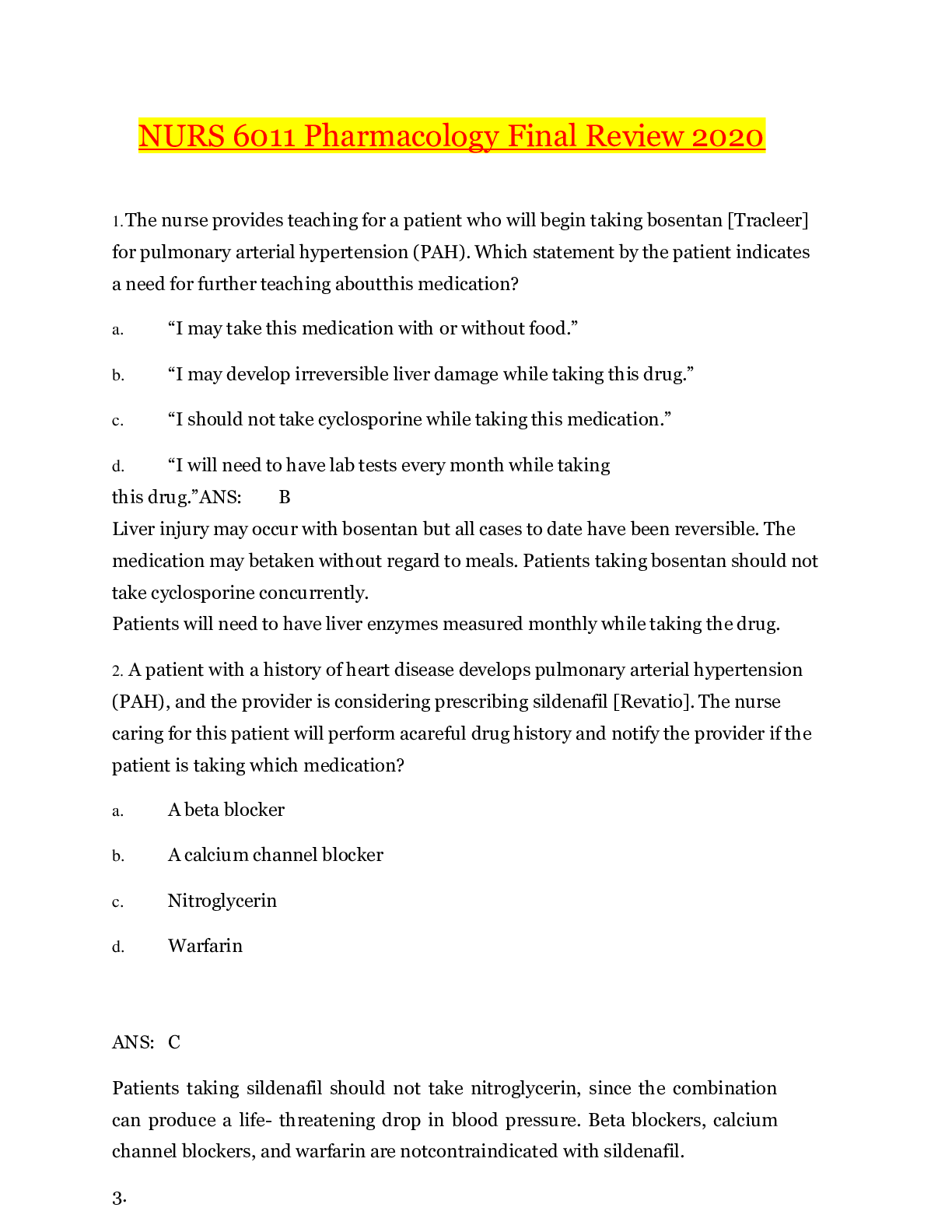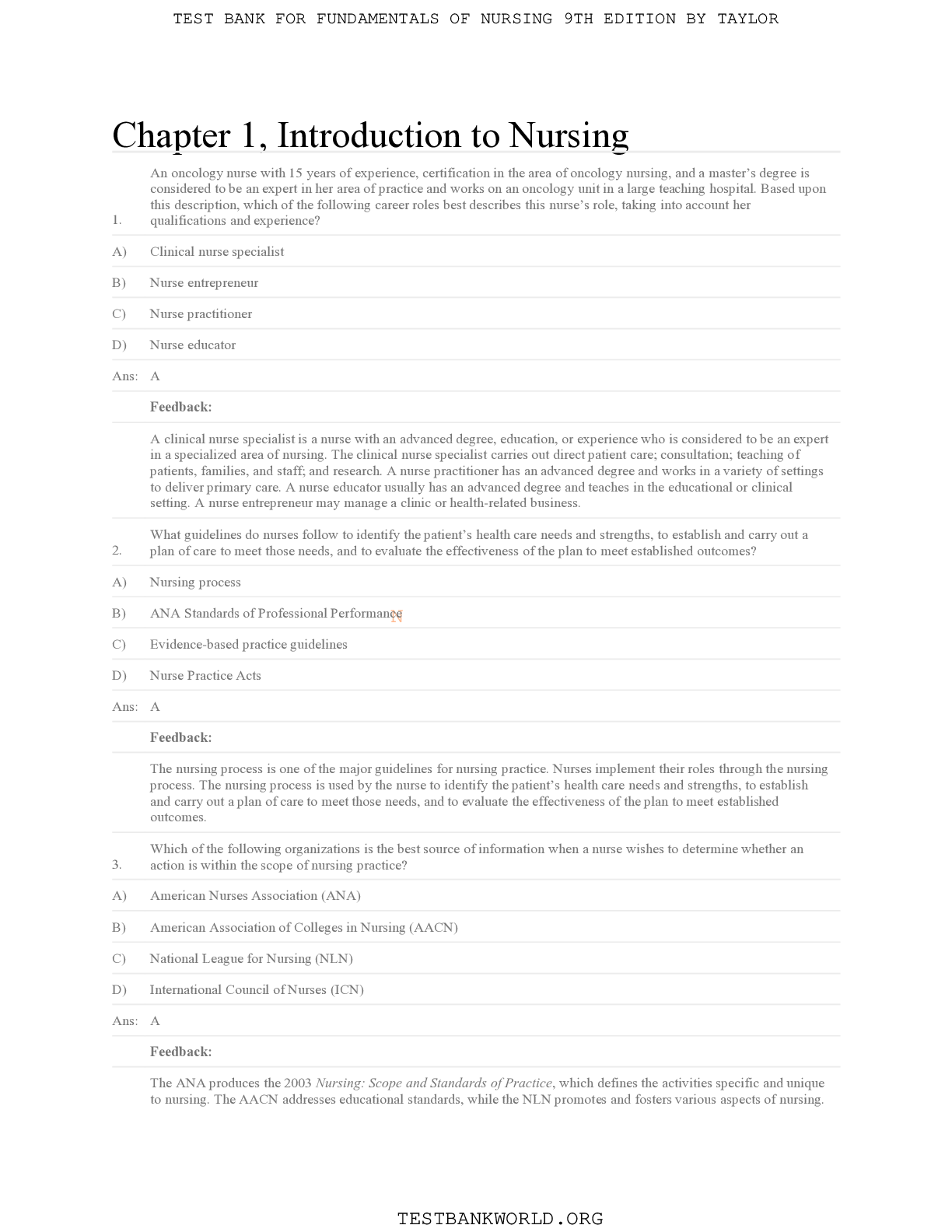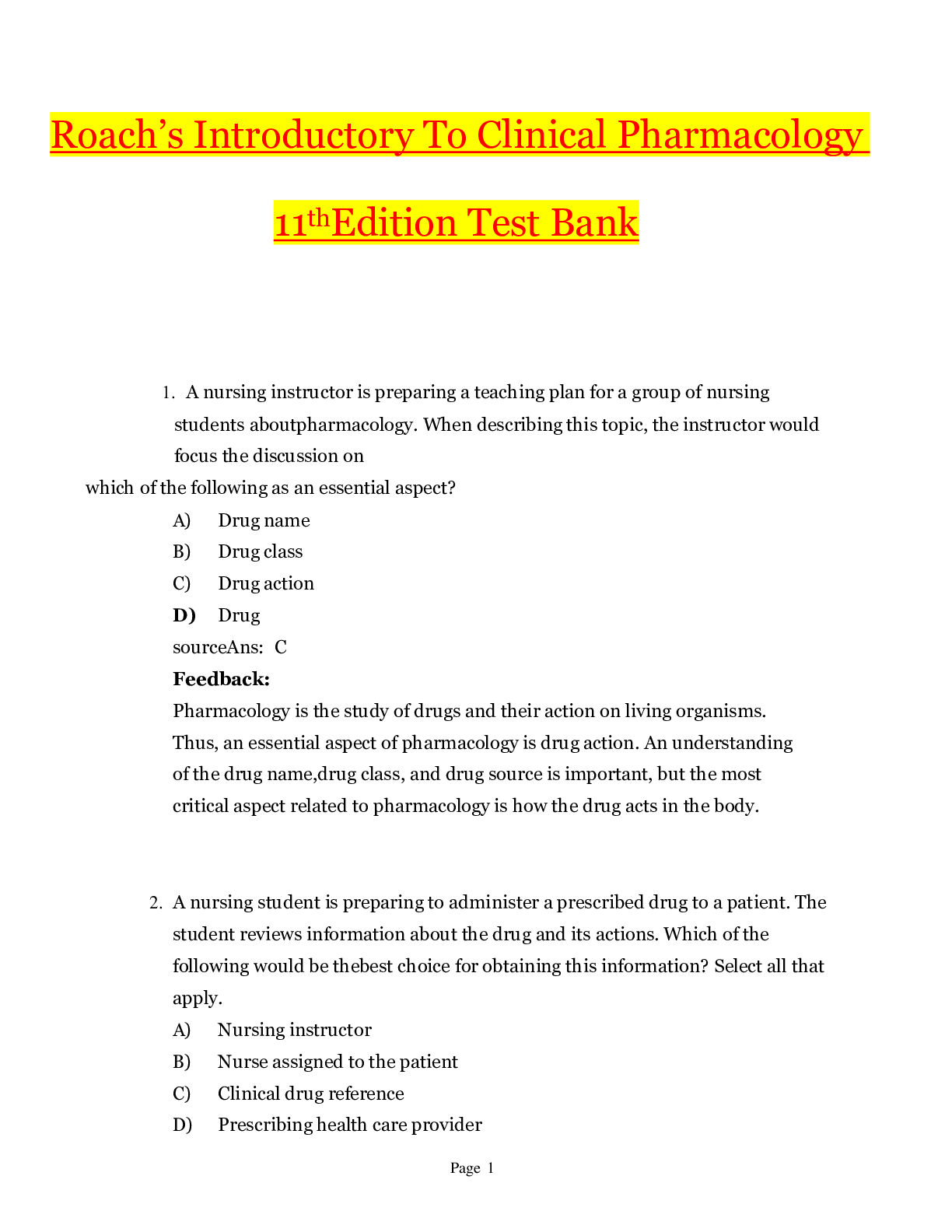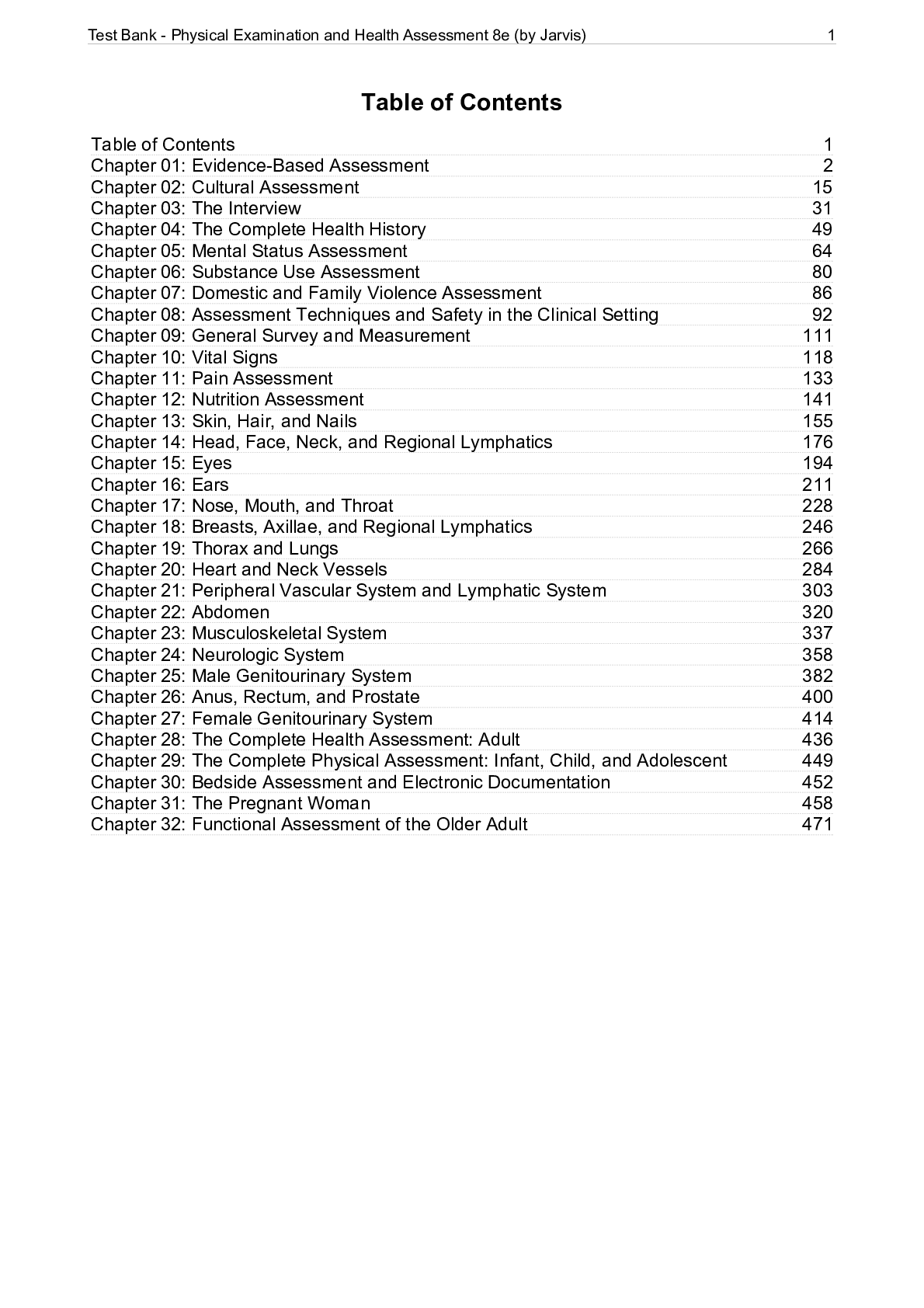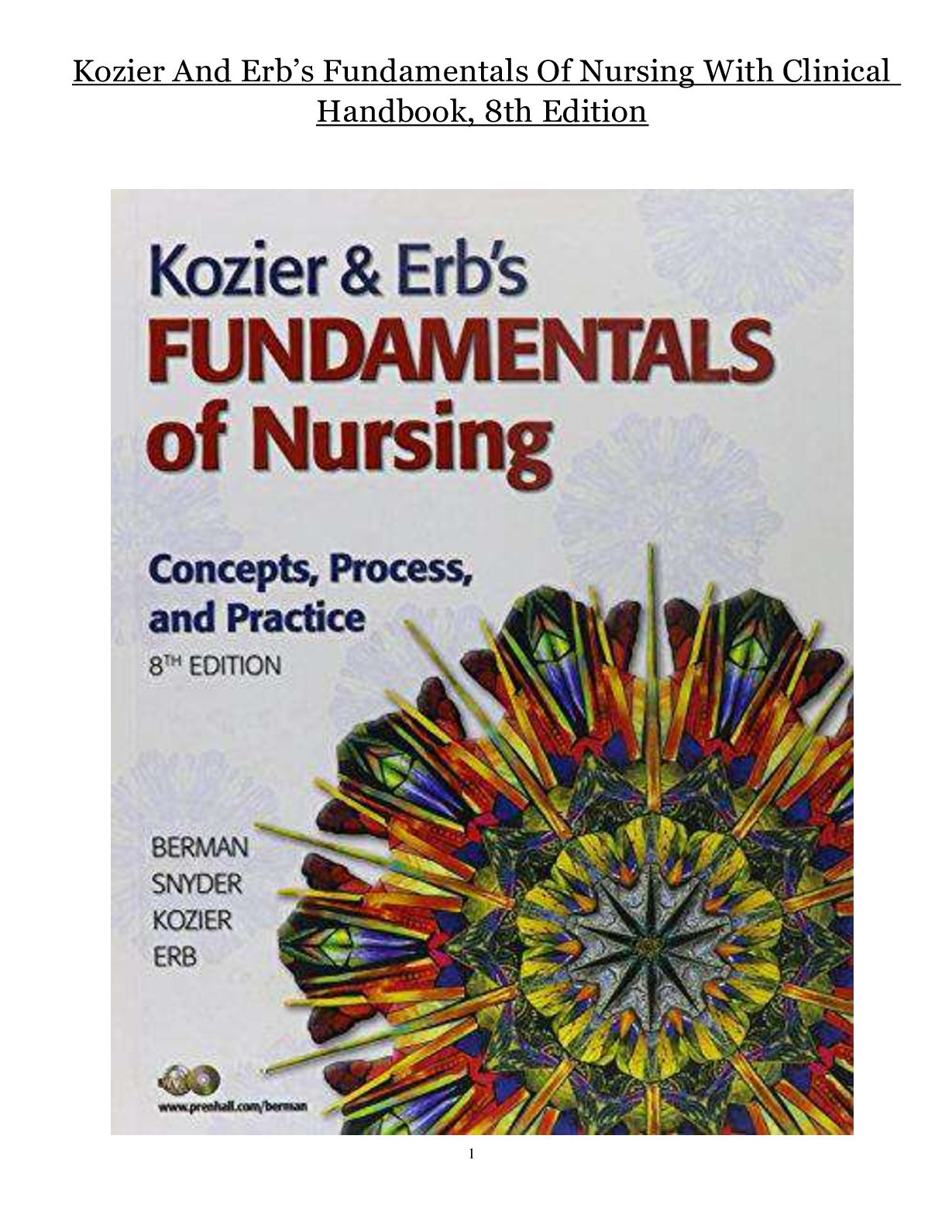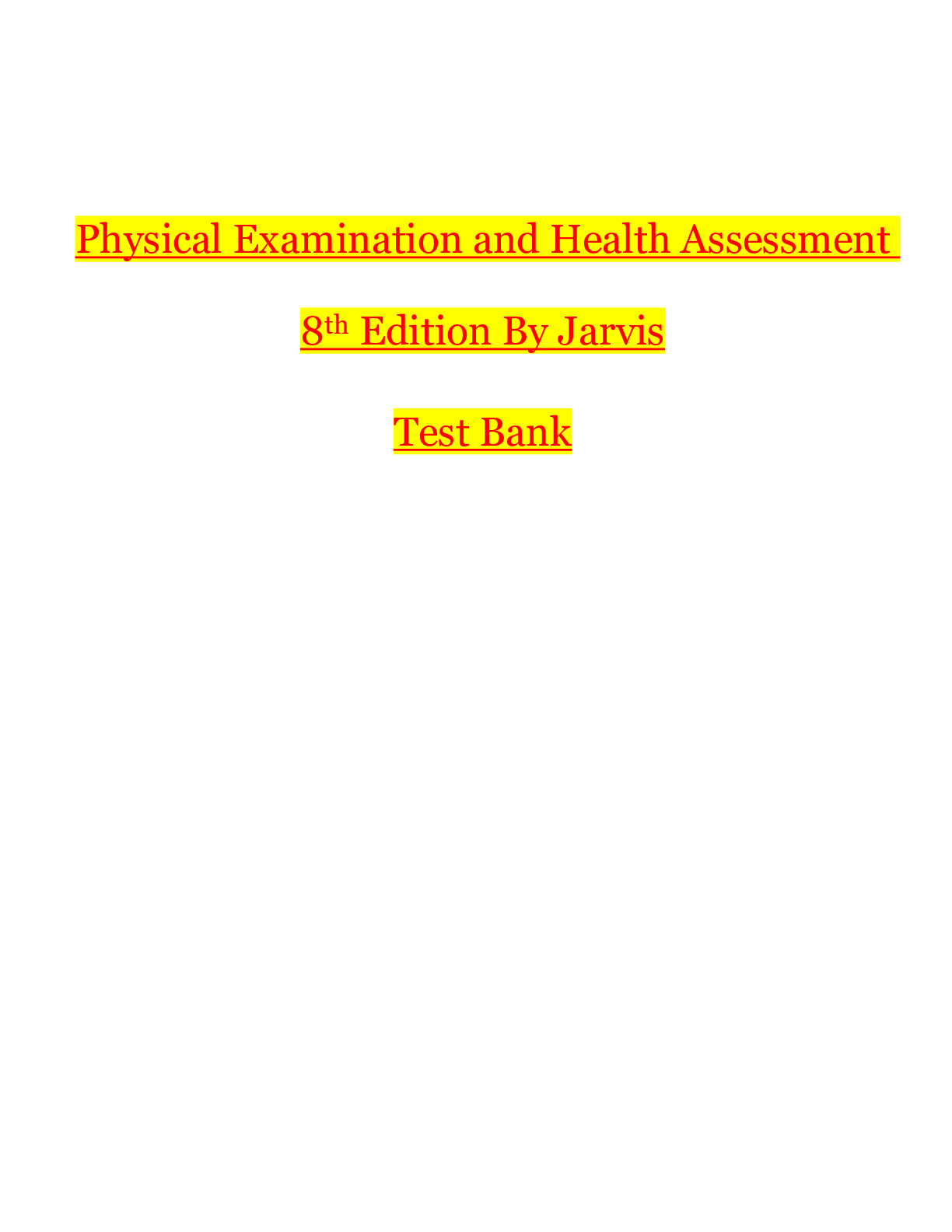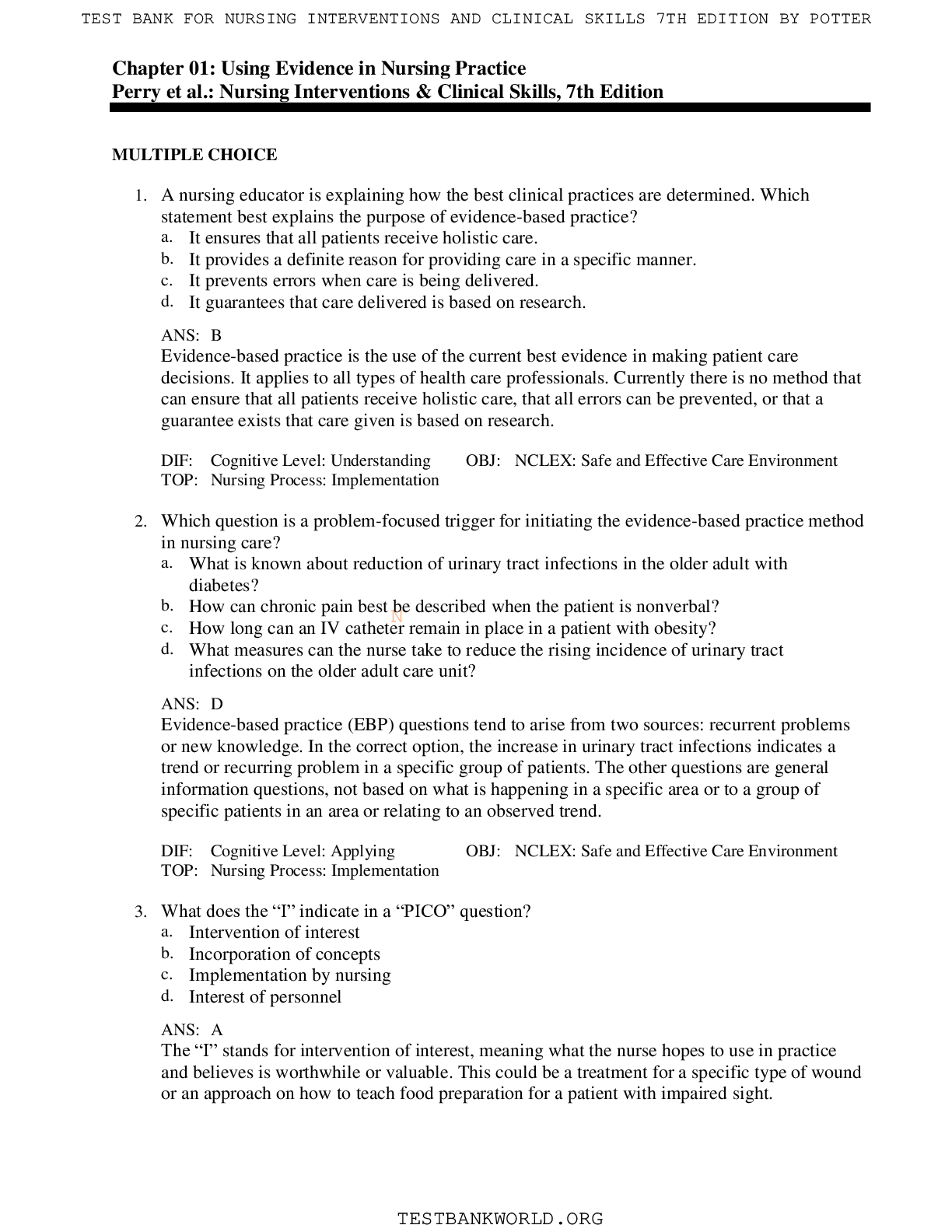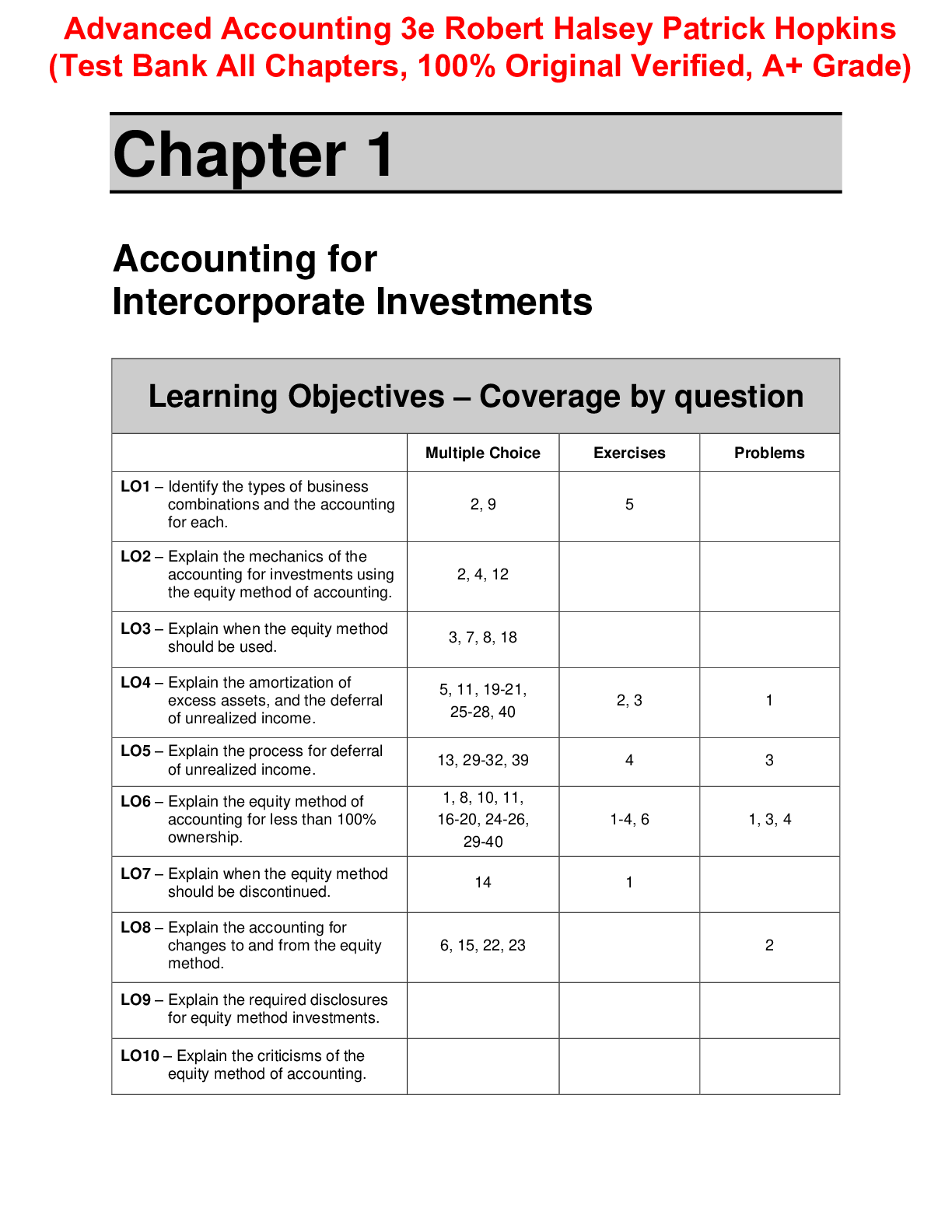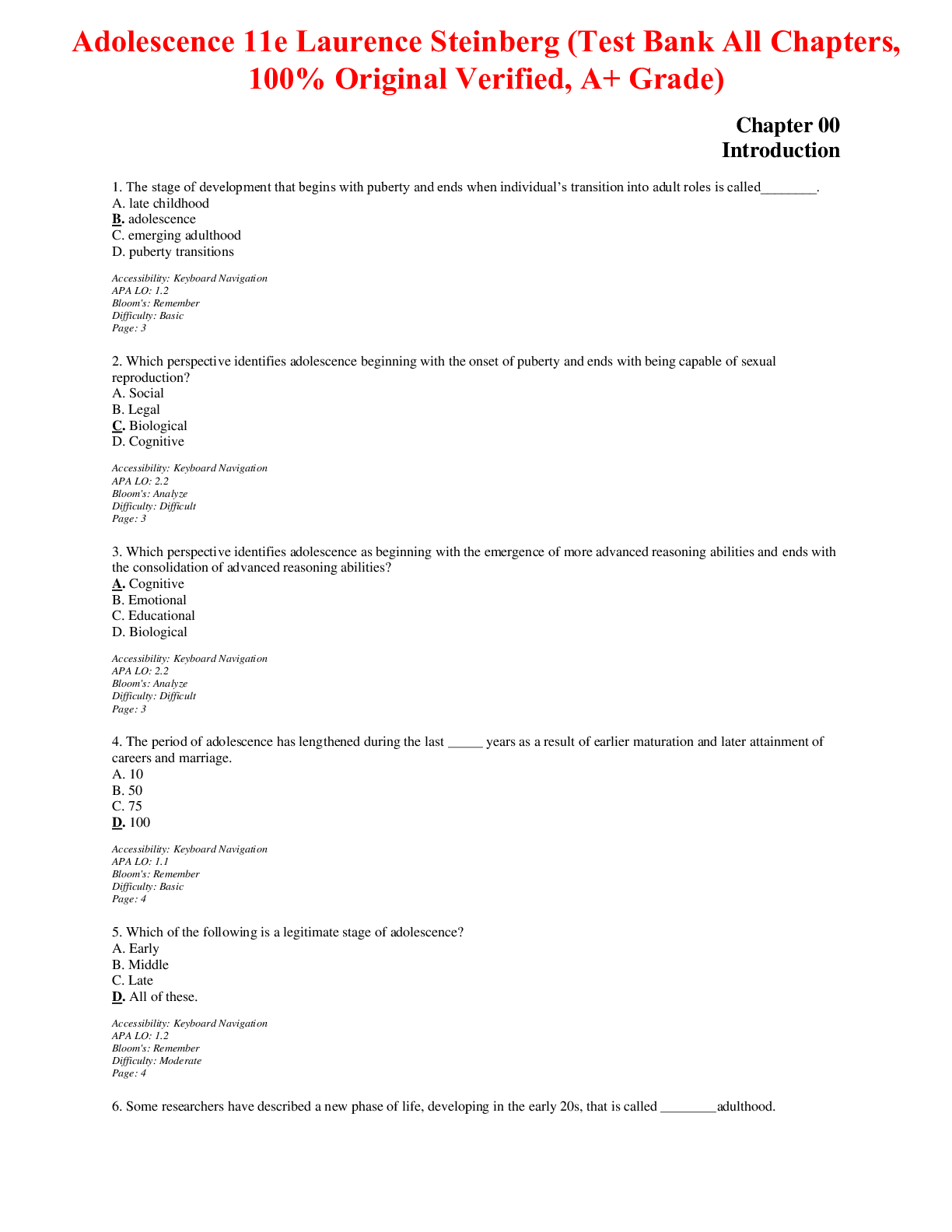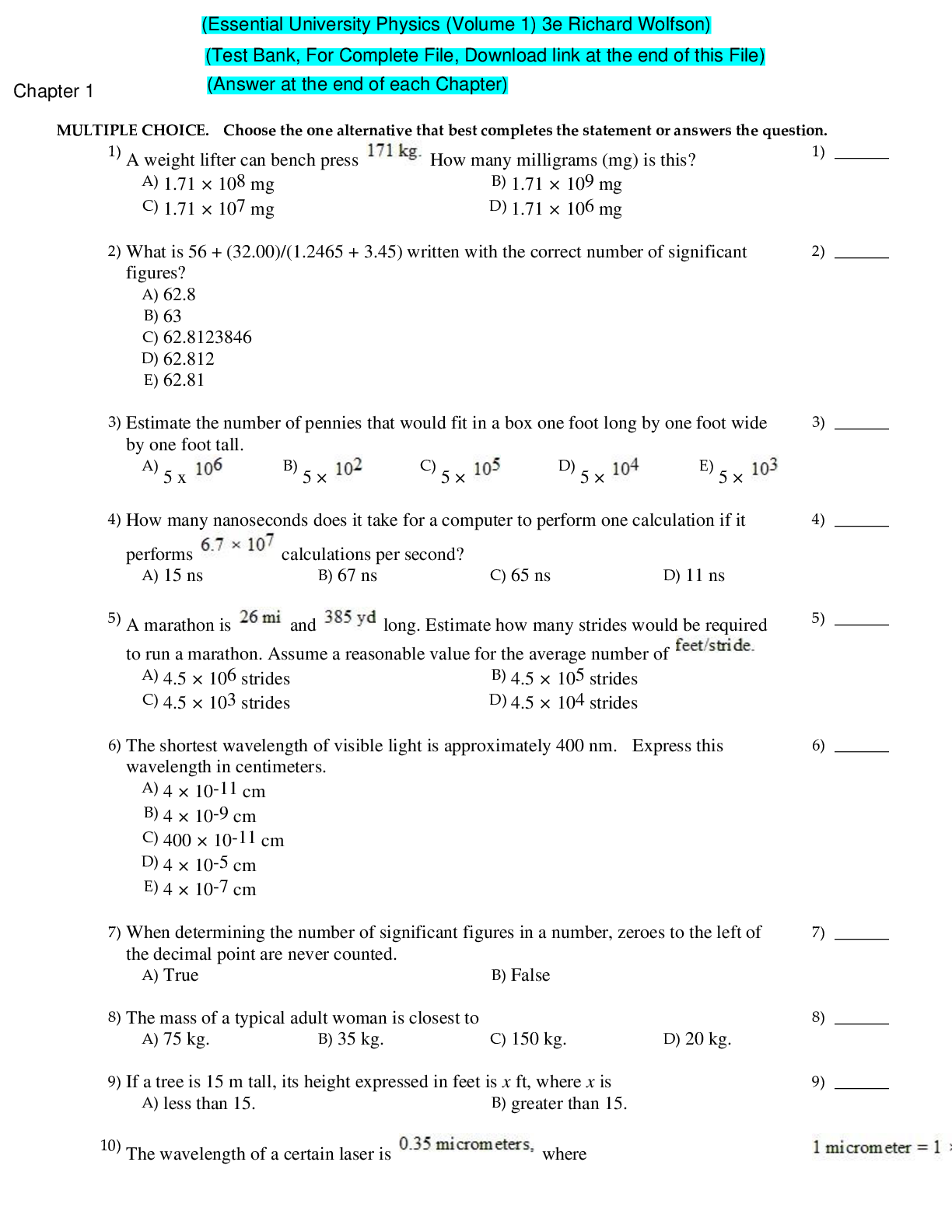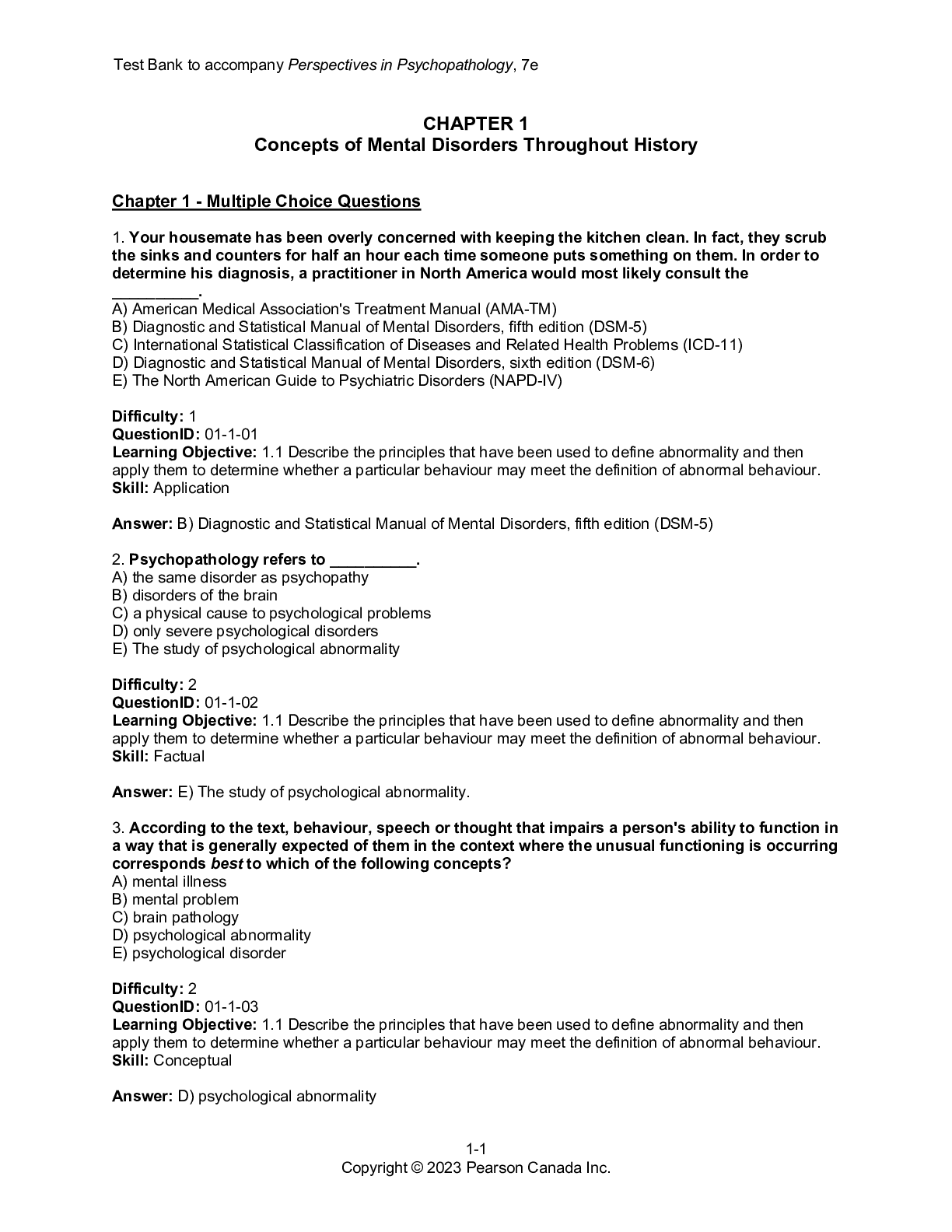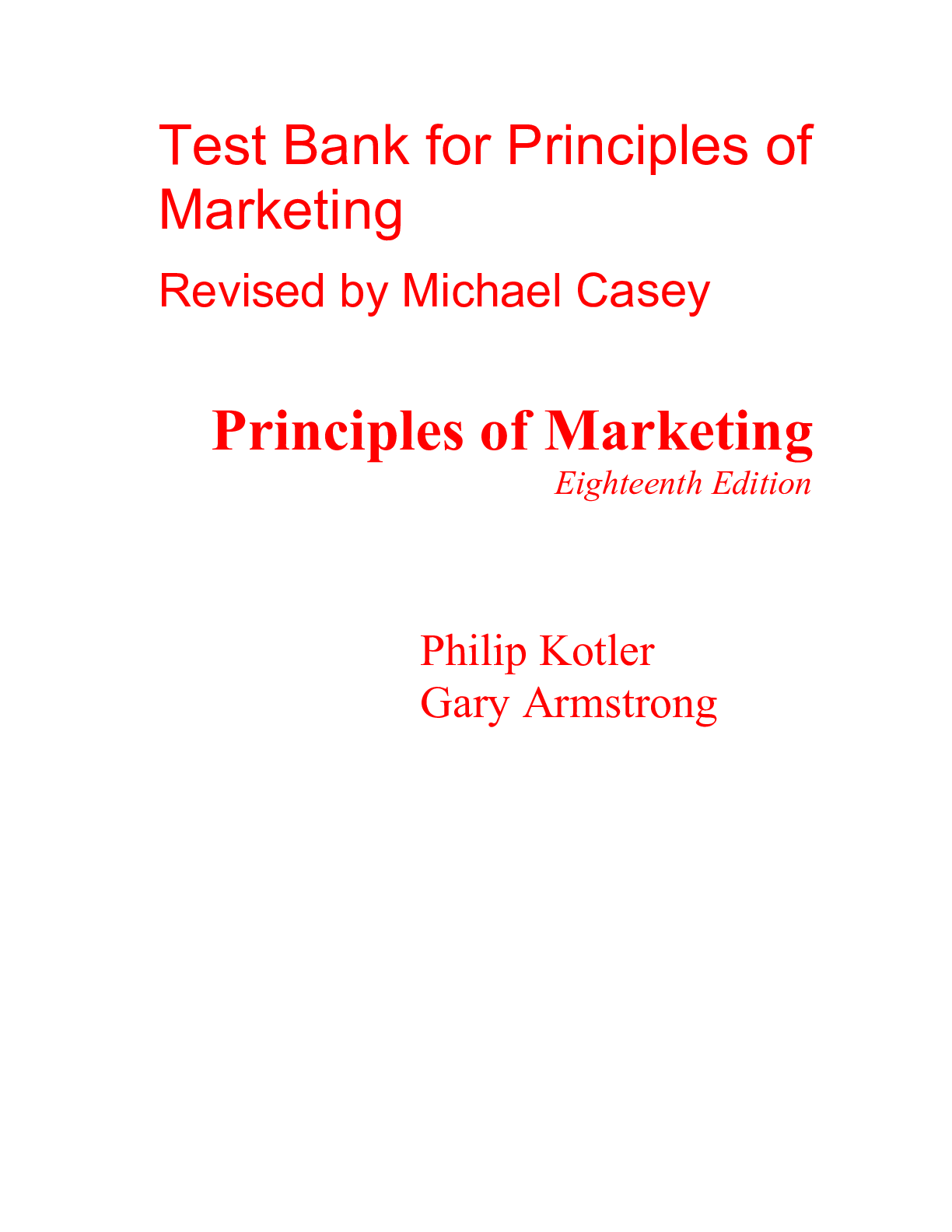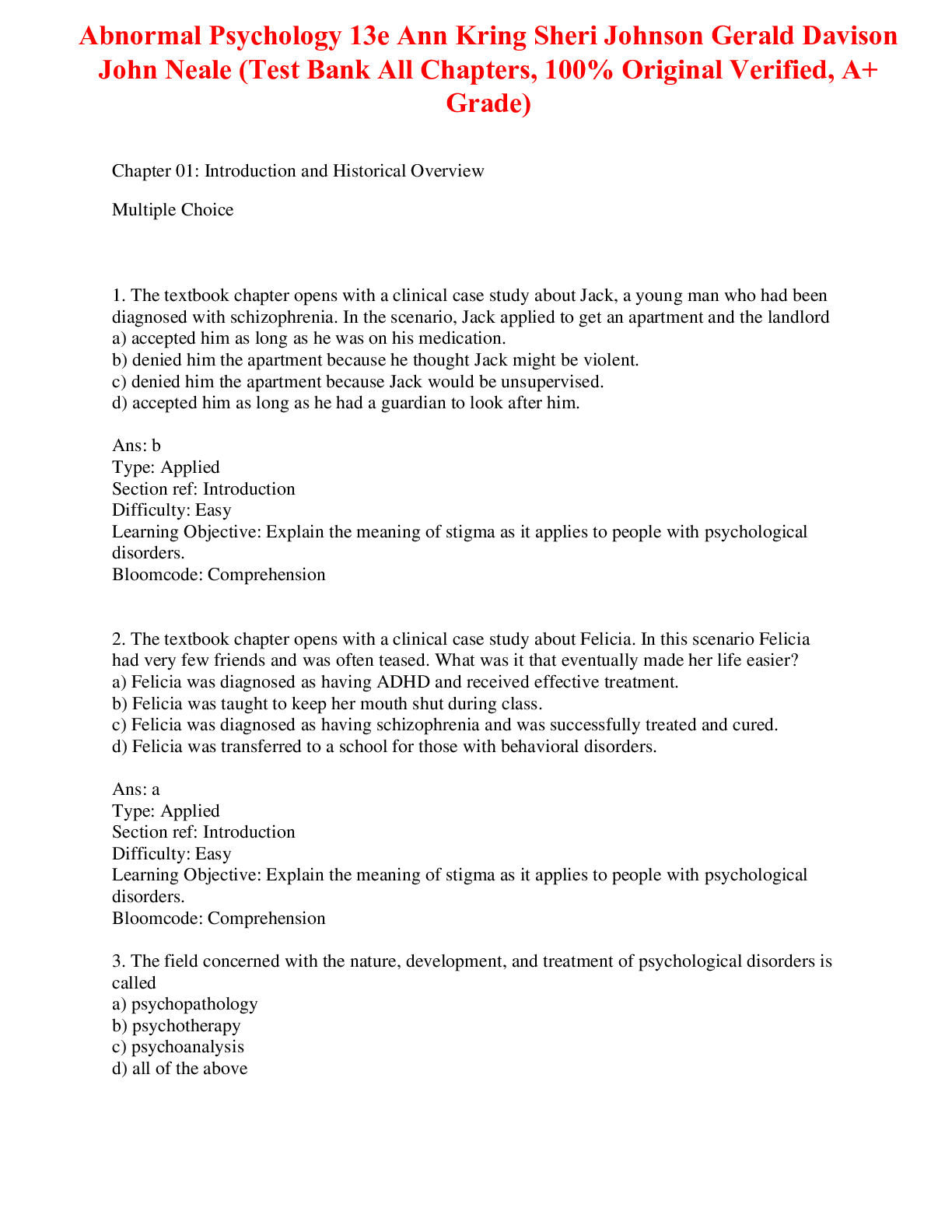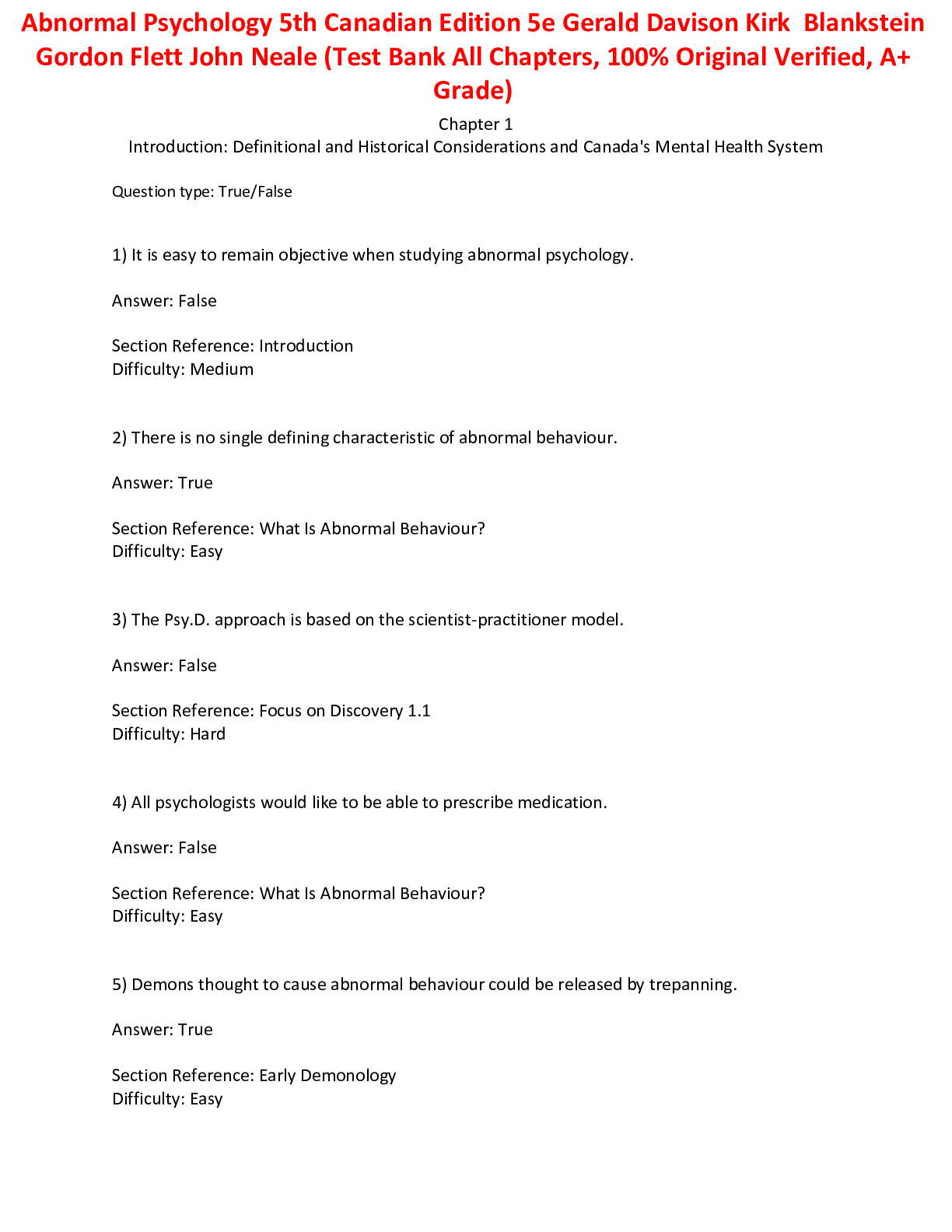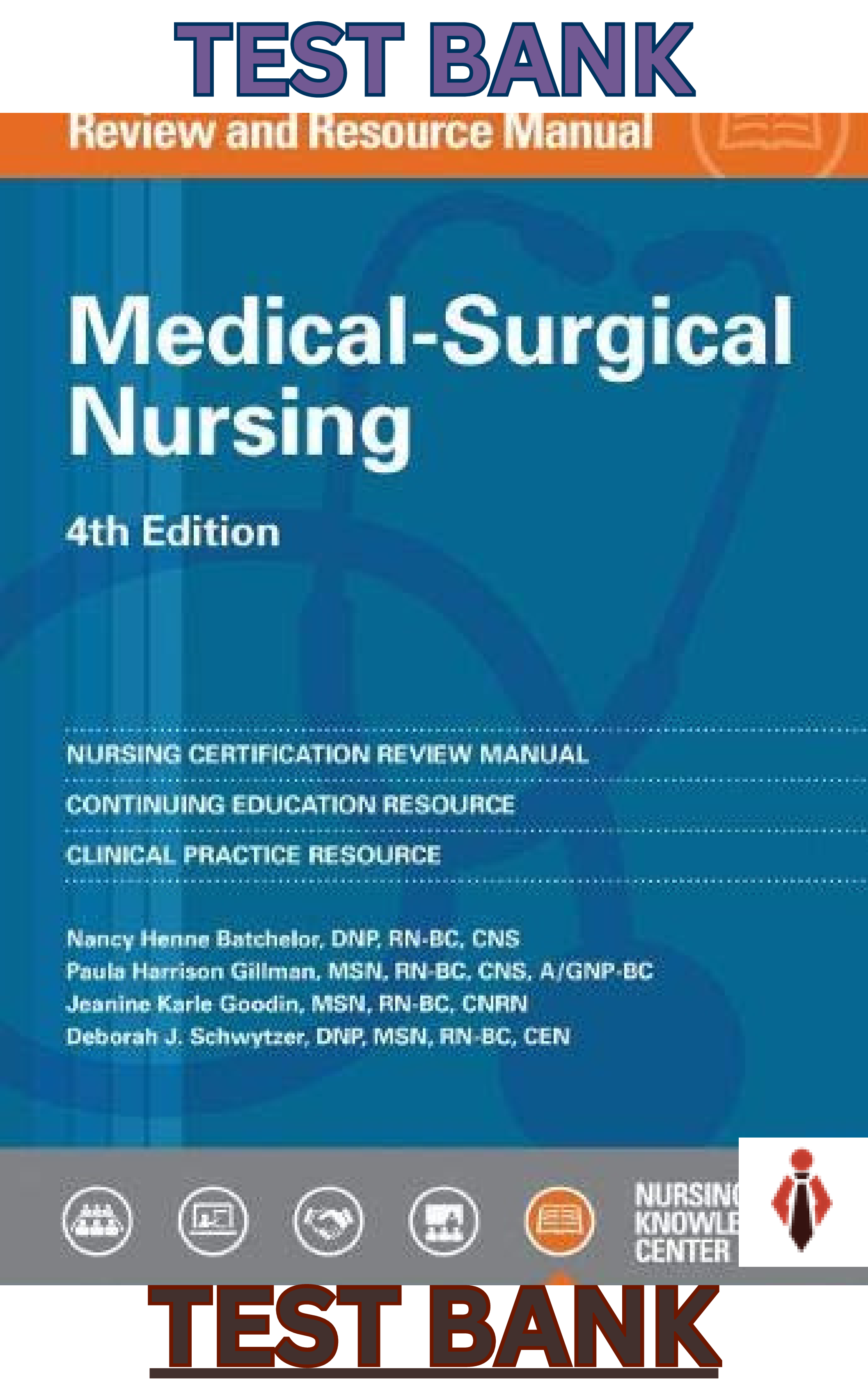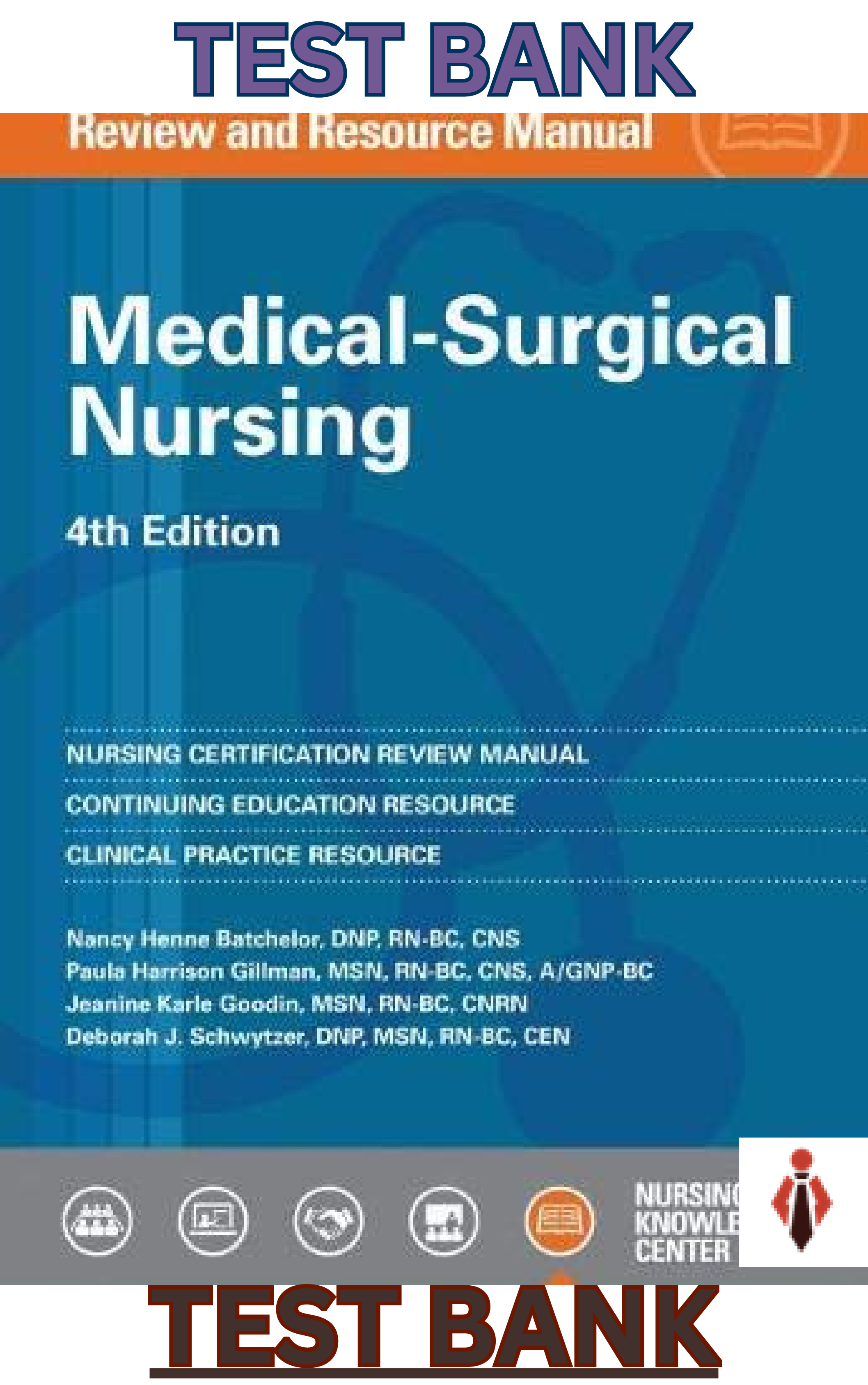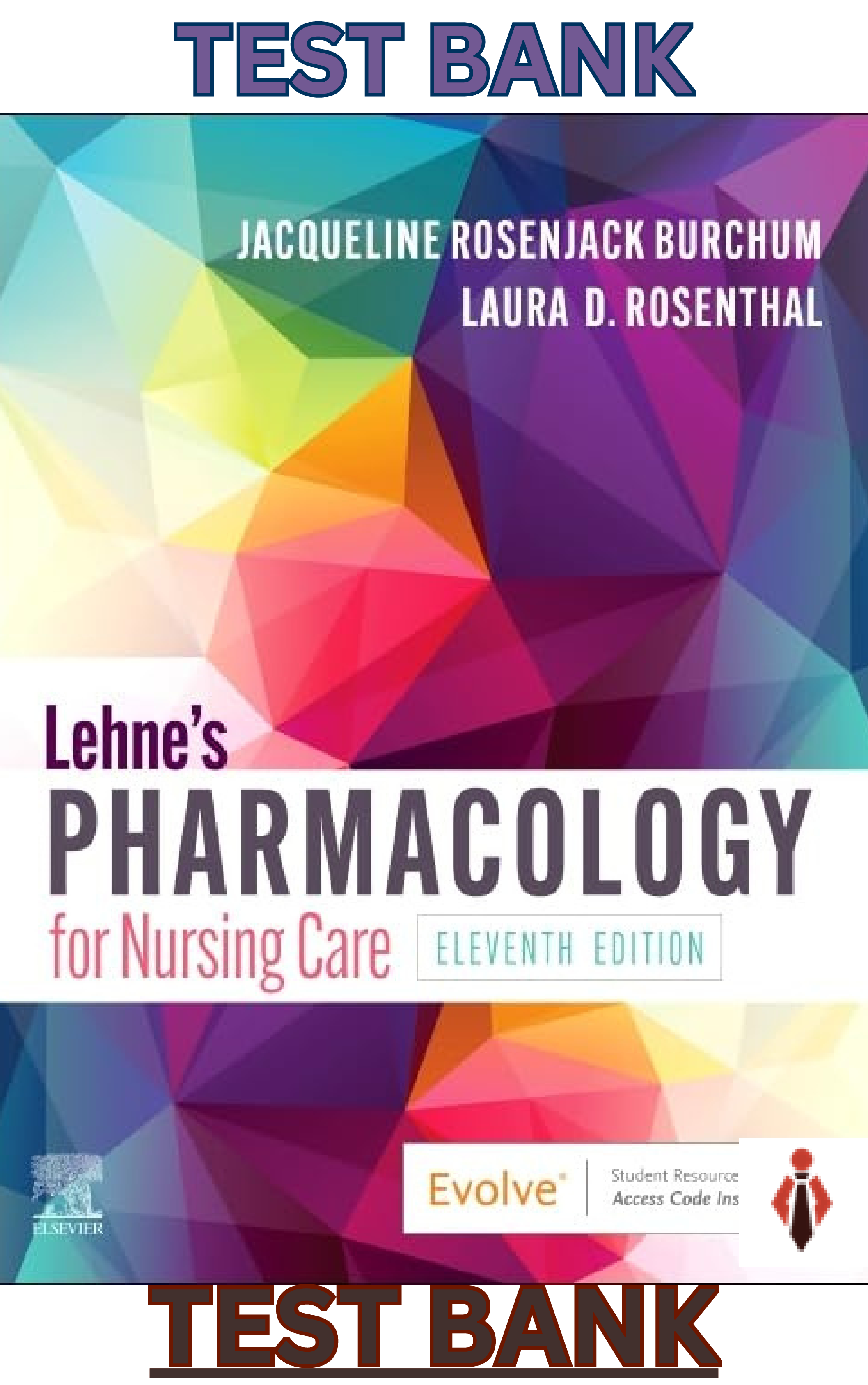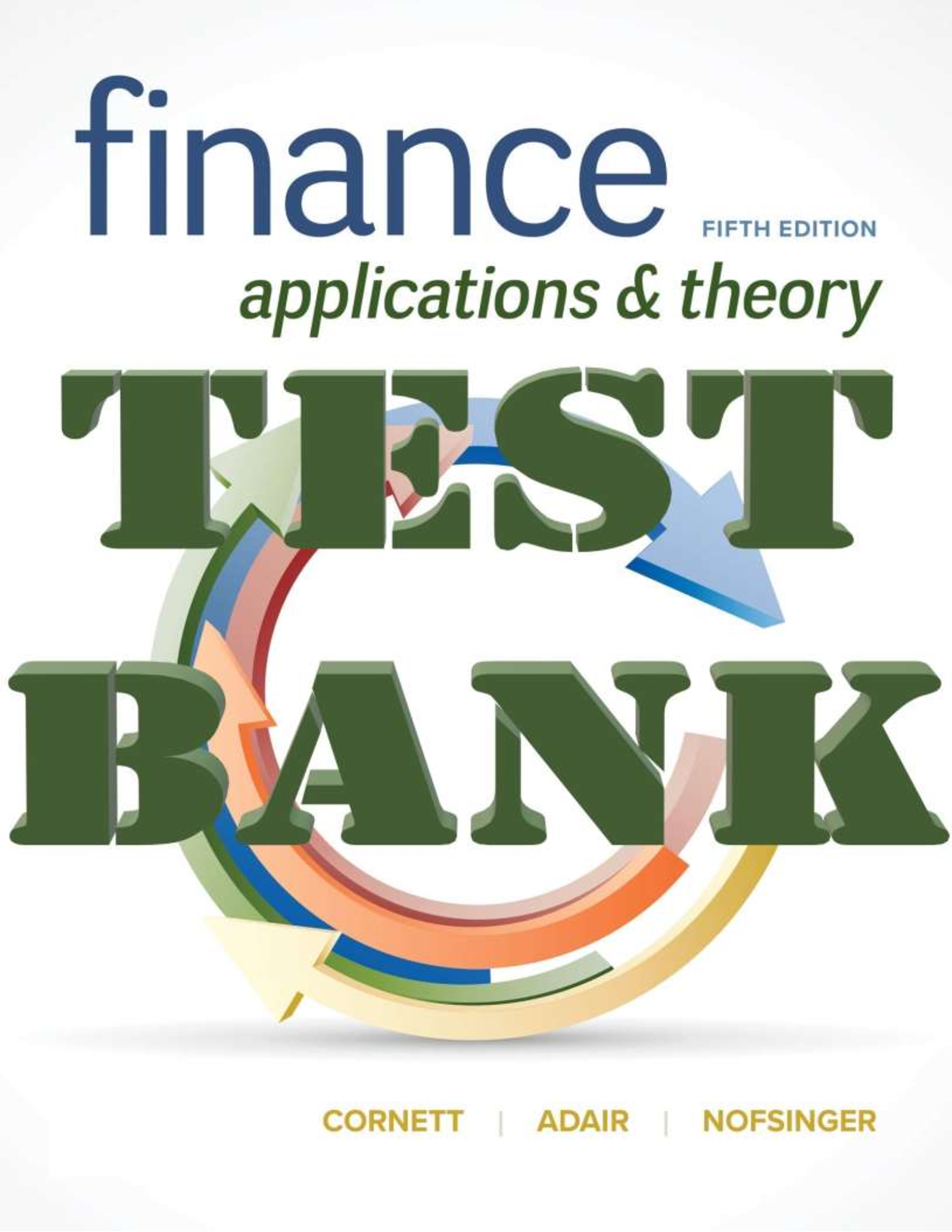Biology > TEST BANK > SOPHIA_Unit_6_Tutorials_Genetics_and_Biotechnology_2020 | SOPHIA_Unit_6_Tutorials (All)
SOPHIA_Unit_6_Tutorials_Genetics_and_Biotechnology_2020 | SOPHIA_Unit_6_Tutorials
Document Content and Description Below
Unit 6 Tutorials: Genetics and Biotechnology INSIDE UNIT 6 Genetics and DNA Structure of DNA and Chromosomes Mitosis Meiosis and Genetic Variability DNA Replication Protein Synthesis, Part 1: ... Transcription Protein Synthesis, Part 2: Translation DNA Sequencing DNA Technology and Research Genetics and Inheritance Heredity Punnett Squares Codominance Polygenic Traits and Pleiotropy Pedigrees Chromosome Structure Changes Chromosome Count Changes Autosomal Recessive Traits and Disorders Autosomal Dominant Traits and Disorders X-Linked Traits Structure of DNA and Chromosomes by Sophia Tutorial T his lesson will discuss the structure of chromosomes by looking at: 1. Chromosome Structure & Function 2. Chromosome Number & Location 3. DNA Structure a. Nitrogenous Bases WHAT'S COVERED © 2019 SOPHIA Learning, LLC. SOPHIA is a registered trademark of SOPHIA Learning, LLC. Page 1b. Base Pairs c. Nucleotide Sequence 1. Chromosomes When a cell is getting ready to divide, genetic information in the form of DNA will condense into structures called chromosomes. This is how genetic information is passed from parent to offspring. Homologous chromosomes are chromosomes that contain the same set of genes and are the same length and shape. One is from the mother of the offspring, and other is from the father. There are two types of chromosomes within our body: Sex chromosomes: Chromosomes associated with sex and gender Autosomes: All the chromosomes in our body except for the sex chromosomes TERMS TO KNOW Chromosome A condensed DNA structure. Homologous Chromosomes Chromosomes paired together that are the same length and shape and contain the same sets of genes; typically, one of the homologous pair is contributed by each parent. Sex Chromosomes Chromosomes associated with sex and gender. Autosomes All of the chromosomes in the body except for sex chromosomes. 2. Chromosome Number and Location The chromosome number is the number of chromosomes in a species' cells. Each species has its own number of chromosomes. EXAMPLE For humans, the chromosome number is 46. This means that we have 46 chromosomes, or 23 pairs of homologous chromosomes, in our cells. Of those 46 chromosomes, most of them are autosomes. Only two of those chromosomes are sex chromosomes. A mouse has a total of 40 chromosomes. Chromosomes are only visible in this form when the cell is preparing to divide. The rest of the time, our genetic information can be found in the form of chromatin, which has a balled-up thread-like form and is found within the cell's nucleus. © 2019 SOPHIA Learning, LLC. SOPHIA is a registered trademark of SOPHIA Learning, LLC. Page 2This makes sense; when the cell isn't dividing, the DNA is more stretched out so its information is physically accessible. When the cell is dividing, The DNA has to move all the way across the cell. It's not being accessed for much information, so it's better to be wound up tight with a bunch of protective proteins. It's like packing a suitcase: It's easier to take everything you need if all the clothes are rolled up tightly (just as the DNA is condensed into visible chromosomes) than if you just throw clothes in a pile in your suitcase (like when the DNA is stretched out). 3. DNA Structure DNA is said to be in the structure of adouble helix, or a "twisting ladder". The outside parts of the ladder (the "side rails") are made up of a phosphate-sugar backbone--that is, phosphate and deoxyribose sugar molecules. In DNA, the sugar within its nucleotides is called deoxyribose; in RNA, the sugar within its nucleotides is called ribose. © 2019 SOPHIA Learning, LLC. SOPHIA is a registered trademark of SOPHIA Learning, LLC. Page 33a. Nitrogenous Bases The "rungs" of the ladder are made up of four nitrogenous bases: Adenine Thymine Cytosine Guanine These nitrogenous bases compose two base pairs. Adenine always pairs with thymine, and cytosine always pairs with guanine. TERMS TO KNOW Double Helix The shape of the DNA molecule; often is referred to as the “twisted ladder” and is the title to the book about Watson & Crick's discovery of DNA's structure. Adenine (A) A nucleotide building block of DNA and RNA, adenine is classified as a purine and complements thymine (T) in DNA and uracil (U) in RNA. Thymine (T) A nucleotide building block of DNA, thymine is classified as pyrimidine and complements adenine (A) in DNA; thymine is not found in RNA. Guanine (G) A nucleotide building block of DNA and RNA, guanine is classified as a purine and complements cytosine (C) in DNA and RNA. Cytosine (C) A nucleotide building block of DNA and RNA, it is classified as pyrimidine and complements guanine (G) in © 2019 SOPHIA Learning, LLC. SOPHIA is a registered trademark of SOPHIA Learning, LLC. Page 4DNA and RNA. 3b. Base Pairs The phosphate, the sugar, and the nitrogenous base together make anucleotide, and each "rung" of the double helix (and the rung's small portion of "side rail") is made of two nucleotides facing each other. In DNA, the two nucleotides that make up a particular rung of the twisted ladder are called a base pair. Adenine always pairs with thymine, and cytosine always pairs with guanine. TERMS TO KNOW Nucleotide Organic molecules that consist of a five-carbon sugar (ribose in the case of RNA and deoxyribose in the case of DNA), a phosphate group and a nitrogenous base; nucleotides are the building blocks of nucleic acids (DNA & RNA). Base Pair The way that nucleotides interact with one another, A bonds with T and C bonds with G in DNA, while C bonds with G and A bonds with U (uracil) in RNA; the sequence of base pairs creates the genetic code that is transcribed and translated into proteins. 3c. Nucleotide Sequence If you follow one of the "rails" of the DNA's "twisting ladder", you will see the nucleotides' order (A, T, C, etc.). This is called a nucleotide sequence. The order of letters (nucleotides) in the nucleotide sequence is very important because the sequence contains instructions or "recipes" for all our thousands of proteins. These "recipes" for our proteins are called genes. Any change in the nucleotide sequence is amutation, and can have a negative impact on a protein's structure or production. For example, one of the genes for making hemoglobin is 1,605 nucleotides long. Within that stretch of DNA, there is a sequence of three nucleotides that reads "GAG", but in some people, the nucleotide sequence at that location reads "GTG". It's like a typo; instead of saying "Shall I compare thee to a summer's day" the gene says "Shawl I compare thee to a summer's day". Hemoglobin produced from this mutated gene is more likely to clump. If only one the two copies of chromosome 11 (one of its two homologous pairs) has this mutation, it means only half of the hemoglobin the person produces is clumpy, and the person is less vulnerable to malaria. But if both of the homologous chromosomes have the mutated genes, all of the hemoglobin produced is clumpy, and the person will suffer from sickle cell anemia. TERMS TO KNOW Nucleotide Sequence The arrangement of nucleotides (the order of A's, C's, G's and T's) that form genes in strands of DNA. Gene A segment of DNA that codes for a specific protein, genes are a sequence of nucleotides. Mutation A change in the nucleotide sequence. Chromosomes are the form DNA takes when a cell is getting ready to divide, and are only visible during this time. Homologous chromosomes are chromosomes that contain the same set of genes. There are two types of chromosomes within our body: Autosomes and sex chromosomes. The chromosome number is the number of chromosomes a species has in its cells.DNA, the genetic information that makes up chromosomes, come in the form of a double helix. It is made up of phosphate and deoxyribose sugar molecules as the backbone of the structure with adenine/thymine SUMMARY © 2019 SOPHIA Learning, LLC. SOPHIA is a registered trademark of SOPHIA Learning, LLC. Page 5or cytosine/guanine base pairs in between. Keep up the learning and have a great day! Source: SOURCE: THIS WORK IS ADAPTED FROM SOPHIA AUTHOR AMANDA SODERLIND ATTRIBUTIONS Chromosomes | Author: Wikipeda | License: Creative Commons Cell Nucleus and Chromosomes | Author: Wikipeda | License: Creative Commons Double Helix | Author: Wikipeda | License: Creative Commons Adenine (A) A nucleotide building block of DNA and RNA, adenine is classified as a purine and complements thymine (T) in DNA and uracil (U) in RNA. Autosomes All of the chromosomes in the body except for sex chromosomes. Base Pair The way that nucleotides interact with one another. In DNA, A bonds with T, and C bonds with G. In RNA, C bonds with G, and A bonds with U (uracil). The sequence of base pairs creates the genetic code that is transcribed and translated into proteins. Chromosome A condensed DNA structure. Cytosine (C) A nucleotide building block of DNA and RNA, cytosine is classified as pyrimidine and complements guanine (G) in DNA and RNA. Double Helix The shape of the DNA molecule; often is referred to as the “twisted ladder” ("Double Helix" is the title to the book about Watson & Crick's discovery of DNA's structure). Gene A segment of DNA that codes for a specific protein, genes are a sequence of nucleotides. Guanine (G) A nucleotide building block of DNA and RNA, guanine is classified as a purine and complements cytosine (C) in DNA and RNA. Homologous Chromosomes Chromosomes that are paired together that are the same length and shape and contain the same sets of genes. Typically, one of the homologous pair is contributed by each parent. TERMS TO KNOW © 2019 SOPHIA Learning, LLC. SOPHIA is a registered trademark of SOPHIA Learning, LLC. Page 6Mutation A change in the nucleotide sequence. Nucleotide Organic molecules that consist of a 5 carbon sugar (ribose in the case of RNA, and deoxyribose in the case of DNA), a phosphate group and a nitrogenous base; nucleotides are the building blocks of nucleic acids (DNA & RNA). Nucleotide Sequence The arrangement of nucleotides that form genes in strands of DNA. Sex Chromosomes Chromosomes associated with sex and gender. Thymine (T) A nucleotide building block of DNA, thymine is classified as pyrimidine and complements adenine (A) in DNA; thymine is not found in RNA. © 2019 SOPHIA Learning, LLC. SOPHIA is a registered trademark of SOPHIA Learning, LLC. Page 7Mitosis by Sophia Tutorial T his lesson will cover the role of Mitosis in the cell cycle by looking at: 1. The Cell Cycle 2. Interphase 3. Mitosis Phases 4. Cytokinesis 1.The Cell Cycle Mitosis is a part of the cell cycle. The cell cycle describes events that happen from the time a cell is formed until it divides. Mitosis is a type of cell division that happens in somatic cells (all the cells in your body except for gametes). This process produces new cells. Cells are constantly going through the cell cycle and producing new cells. As cells grow old and die, they need to be replaced by new ones. TERM TO KNOW Cell Cycle Describes the events that occur from the time a cell is formed until it divides. 2. Interphase Interphase is the first part of the cell cycle, but it's not considered to be a part of mitosis. Interphase is the part of the cycle where the cell is getting ready to divide but is not dividing yet. It is the longest phase of the cell cycle and is where the cell spends most of its life. There are three sub-phases to interphase: G1 Phase: Part of interphase is when the cell will start to increase in size and grow in preparation for cell division. S Phase: During this part, DNA is copied (DNA synthesis), and chromosomes are duplicated G2 Phase: Cell grows, making its final preparations in order to get ready to divide WHAT'S COVERED © 2019 SOPHIA Learning, LLC. SOPHIA is a registered trademark of SOPHIA Learning, LLC. Page 8Typically in interphase, chromosomes are not visible. Genetic information, or DNA, is found in the form of chromatin, which is like a thread-like ball of yarn that's found within the nucleus. As a cell is preparing to divide, that DNA will then condense into chromosomes which will be copied in preparation for division. Chromosomes are made of sister chromatids attached in the middle at a point called thecentromere. TERMS TO KNOW Interphase A phase of the cell cycle in which a cell carries out its normal functions; includes all parts of a cell’s life except for when the cell is dividing. G1 Phase The portion of interphase in which a cell grows in size. S Phase The portion of interphase in which a cell’s DNA is copied. G2 Phase The portion of interphase in which a cell makes final preparations for cell division. Sister Chromatid A duplicate of an original chromosome produced during mitosis. Centromere The point at which sister chromatids are attached to one another. 3. Mitosis Phases Mitosis actually includes four phases: © 2019 SOPHIA Learning, LLC. SOPHIA is a registered trademark of SOPHIA Learning, LLC. Page 9Prophase. During this phase, the nuclear envelope that normally surrounds the genetic information will start to break down. Poles will form on opposite ends of cells; they become the attachment points to each sister chromatid's centromere so that each new cell gets exactly one of the two sister chromatids for each chromosome. Metaphase. Chromosomes will line up on the metaphase plate, which is an invisible line in the middle of the cell. Spindle fibers are attached to the centromeres of the chromosomes to prepare these chromosomes to be pulled apart to separate ends of the cell. Anaphase. Sister chromatids are separated and moved to opposite ends of the cell. Telophase. The nuclear envelope will begin to reform around the chromosomes, and the plasma membrane will start to pinch off. This area where it's pinching off is called the cleavage furrow. TERM TO KNOW Prophase The first phase of mitosis in which chromosomes are condensed, the nuclear membrane breaks down, and poles at opposite ends of the cell begin to form. Metaphase The second phase of mitosis in which chromosomes line up on the metaphase plate and are attached at the centromere to spindle fibers. Anaphase The third phase of mitosis in which sister chromatids are separated and pulled by spindle fibers toward opposite poles of the cell. Telophase The final phase of mitosis in which the plasma membrane begins to pinch off and the nuclear membrane begins to reform; chromosomes begin to return to their thread-like state. Cleavage Furrow The pinching off of the plasma membrane to produce two new cells. - - - - - - - - - - - - - - - - - - - - - 2. Changes in the Number of Sex Chromosomes Turner syndrome, Klinefelter syndrome, and XYY condition are examples where there is an anomaly in the number of sex chromosomes. Turner syndrome is when an X chromosome is missing. Generally, a person who is missing an X chromosome would be miscarried by the mother, but anyone who does survive is always going to be a female. That female is going to end up with sexual abnormalities and, generally, a shortened life span. Klinefelter syndrome occurs when sex chromosomes have an extra copy. The person’s genotype on their sex chromosomes would be XXY, and the individual would be a male with an extra X chromosome. A person with this disorder is going to have low fertility, the possibility of mental retardation, and small testes. They will also have physical abnormalities because of the presence of this extra X chromosome. XYY syndrome is another condition that affects the sex chromosome. This person would be male because of the presence of the Y chromosome. The only real result of this is that the male is probably going to be a little bit taller than average. There are no serious abnormalities caused by having an extra Y chromosome. TERMS TO KNOW Turner Syndrome A genetic condition in which an X chromosome is missing (XO instead of XX or XY); if the child is not miscarried, the effects can range from non-life threatening to life-threatening.; people with Turner syndrome are female due to the presence of only an X chromosome, are almost universally infertile and typically have cardiovascular issues along with other organ system problems. Klinefelter Syndrome A condition in which a person has an XXY chromosomal pattern; males that inherit this are often infertile, may develop breasts and other female secondary characteristics and possible mental retardation. XYY Syndrome A condition in which a male inherits an extra Y chromosome; XYY syndrome doesn’t express any cognitive or life-threatening abnormalities, it just tends to make males taller than average. Nondisjunction is the failure of one or more pairs of sister chromatids to separate during cell division and can lead to a change in chromosome number. This will result in cells that end up with too many or too few chromosomes. Down Syndrome is an example of a disorder that is generally caused by nondisjunction. Changes in the number of sex chromosomes can also cause problems. Turner syndrome is caused when an X chromosome is missing, and Klinefelter syndrome is caused when an extra X is present in a male. Both of these disorders can cause long term problems for the person they affect. XYY condition causes no serious abnormalities. Keep up the learning and have a great day! Source: THIS WORK IS ADAPTED FROM SOPHIA AUTHOR AMANDA SODERLIND ATTRIBUTIONS Nondisjunction | Author: Wikipeda | License: Creative Commons SUMMARY TERMS TO KNOW © 2019 SOPHIA Learning, LLC. SOPHIA is a registered trademark of SOPHIA Learning, LLC. Page 61Down Syndrome A genetic disorder in which the 21st pair of chromosomes has three chromosomes vs. the normal pair, this is called a trisomy. Klinefelter Syndrome A condition in which a person has an XXY chromosomal pattern; males that inherit this are often infertile, may develop breasts and other female secondary characteristics and possible mental retardation. Nondisjuction When chromosomes don’t separate during anaphase, causing cells (such as gametes) to have abnormal numbers. Down syndrome is an example of a genetic disorder that results from nondisjunction. Turner Syndrome A genetic condition in which an X chromosome is missing (XO instead of XX or XY). If the child is not miscarried, the effects can range from non-life threatening to life-threatening. People with Turner syndrome are female due to the presence of only an X chromosome, are almost universally infertile and typically have cardiovascular issues along with other organ system problems. XYY Syndrome A condition in which a male inherits an extra Y chromosome; XYY syndrome doesn’t express any cognitive or life-threatening abnormalities, it just tends to make males taller than average. © 2019 SOPHIA Learning, LLC. SOPHIA is a registered trademark of SOPHIA Learning, LLC. Page 62Autosomal Recessive Traits and Disorders by Sophia Tutorial T his lesson is going look at autosomal recessive traits and disorders by examining: 1. Autosomal Recessive 2. Autosomal Recessive Disorders 1.Autosomal Recessive Autosomal recessive traits and disorders are caused by the inheritance of recessive traits on autosomes. Autosomes are all the chromosomes in your body, excluding the sex chromosomes. In order for a person to inherit an autosomal recessive trait or disorder, both parents must contribute recessive alleles. A person with an autosomal recessive trait or disorder has a genotype with two recessive alleles. They would be homozygous recessive. What are the odds certain parents would end up with offspring that are homozygous recessive? Punnett squares can be used to help find out the chances: WHAT'S COVERED © 2019 SOPHIA Learning, LLC. SOPHIA is a registered trademark of SOPHIA Learning, LLC. Page 63The first square shows the odds two people who are both heterozygous (carriers) for a particular trait of having an offspring that is homozygous recessive. A capital letter indicates that the trait is dominant, and the lower case letter shows the recessive trait. The second square shows a parent that is heterozygous (a carrier) for a trait with someone who is homozygous recessive (someone whose phenotype shows the recessive trait). The third square shows two people that are homozygous recessive. There really is no need to make a square for two people that are both homozygous dominant because they will always produce children with the dominant gene. It is important to note that someone who is heterozygous for a trait is a carrier for the recessive trait. They won't display the characteristics of it because they display the dominant trait, but they can still pass the recessive allele on to their offspring. TERM TO KNOW Autosomal Recessive A trait or disorder caused by the inheritance of two recessive alleles on an autosome. 2. Autosomal Recessive Disorders Cystic fibrosis is a type of autosomal recessive disorder in which mucus will build up in the lungs along with other different symptoms. Phenylketonuria (PKU) is another autosomal recessive disorder in which the buildup of a certain amino acid will get too high in a person's body. If they get too much of this certain amino acid built up in their body, it can cause mental retardation. Diet can help lower the specific amino acid, and help prevent symptoms of this disorder. TERMS TO KNOW Cystic Fibrosis An autosomal recessive disorder that results in buildup of mucus in the lungs. Phenylketonuria (PKU) An autosomal recessive disorder that results in the buildup of phenylalanine (an amino acid) in the body that can lead to mental retardation if levels exceed a certain point. Autosomal Recessive traits and disorders are caused by inheritance of recessive traits on the autosomes. Autosomes are all the chromosomes in your body besides your sex chromosomes. For a recessive trait to express in a person's phenotype, they must inherit recessive genes from both of their parents. Some autosomal recessive disorders include cystic fibrosis and phenylketonuria. Keep up the learning and have a great day! Source: This work is adapted from Sophia Author Amanda Soderlind Autosomal Recessive SUMMARY TERMS TO KNOW © 2019 SOPHIA Learning, LLC. SOPHIA is a registered trademark of SOPHIA Learning, LLC. Page 64A trait or disorder caused by the inheritance of two recessive alleles on an autosome. Cystic Fibrosis An autosomal recessive disorder that results in build-up of mucus in the lungs. Phenylketonuria (PKU) An autosomal recessive disorder that results in the build-up of phenylalanine (an amino acid). This build-up can lead to mental retardation if levels exceed a certain point. © 2019 SOPHIA Learning, LLC. SOPHIA is a registered trademark of SOPHIA Learning, LLC. Page 65Autosomal Dominant Traits and Disorders by Sophia Tutorial I n this lesson, we'll discuss the characteristics and examples of autosomal dominant traits and disorders. The specific areas of focus include: 1. Cause of Autosomal Dominant Traits 2. Punnett Squares with Autosomal Dominant Disorders 3. Common Autosomal Dominant Disorders 1. Cause of Autosomal Dominant Traits Autosomal dominant traits or disorders are caused by the inheritance of at least one dominant allele on a person's autosomes. As you learned in a previous lesson, autosomes are the chromosomes found in your cells, excluding the sex chromosomes. For each trait that you have, you possess two alleles for that trait, one inherited from your mother and one inherited from your father. For a person to express an autosomal dominant trait, he or she needs to have at least one dominant allele. This means the person's genotypes could be either big A-little a (Aa) or big A-big A (AA). You only need one dominant allele to phenotypically express an autosomal dominant trait; you can be homozygous dominant or heterozygous, and still have that particular autosomal dominant trait. TERM TO KNOW Autosomal Dominant A trait or disorder caused by the inheritance of at least one dominant allele on an autosome. 2. Punnett Squares with Autosomal Dominant Disorders Some traits are controlled by recessive alleles, and some traits are controlled by dominant alleles. Punnett squares are thus one way to see how the genotypes of parents can affect the outcome of their children. EXAMPLE If a parent possesses at least one dominant allele, that parent will have that trait. The only way that 100% of their potential children would be normal is if both parents were homozygous recessive. In the Punnett square below, you can see that if both parents are homozygous recessive, meaning neither possesses a single dominant allele, then they have a 100% chance of having all normal children. In this case, the normal trait would be homozygous recessive; however, you only need one dominant allele to possess a dominant trait. WHAT'S COVERED © 2019 SOPHIA Learning, LLC. SOPHIA is a registered trademark of SOPHIA Learning, LLC. Page 66 EXAMPLE Say both parents are heterozygous, meaning they have an autosomal trait or disorder because they both have at least one dominant allele. If you look at the Punnett Square below, you'll notice that because they also each possess a recessive allele for the normal condition, they actually have a 25% chance of having a child who is unaffected by the disease. EXAMPLE Now say one parent is heterozygous, and the other parent is homozygous recessive. The first parent contains one allele for that autosomal dominant trait--that parent possesses the trait--while the second parent is completely normal. As the Punnett square shows, this combination of parent alleles means the parents have a 50% chance of having totally normal children. © 2019 SOPHIA Learning, LLC. SOPHIA is a registered trademark of SOPHIA Learning, LLC. Page 672. Common Autosomal Dominant Disorders The following are examples of autosomal dominant disorders: Huntington's Disease: A disease that can be inherited, but the symptoms don't show up until adulthood. Often, people don't realize that they have Huntington's disease until they've already reproduced and passed it on to their children. Marfan Syndrome: This disorder causes a weakening of the aorta, meaning that the aorta can rupture over time. Generally, people with this disorder are very, very tall and lanky. However, the weakening of the aorta is the most serious aspect of Marfan syndrome since rupturing can occur with intense physical activity. Achondroplasia: This disorder results in a person who has short arms and legs, and who is short overall. Most people with this type of disorder only get to be about 4 to 4.5 feet tall, so achondroplasia affects a person's height, and then--as a result--causes shortness of the arms and legs. Familial Hypercholesterolemia: This disorder leads to high blood cholesterol. This is because the cholesterol in the blood of people with this disorder won't bind to LDLs, which is the first step in removing the cholesterol from the body. Therefore, most people with familial hypercholesterolemia often don't have as long of a lifespan as other people as a result of their very high cholesterol. TERMS TO KNOW Huntington's Disease An autosomal dominant disorder which does not show up until later in life often after the gene has been passed onto offspring; it is a neurodegenerative disorder that causes motor and cognitive impairment and eventually becomes fatal. Marfan Syndrome A genetic disorder of connective tissue that causes people to have a certain appearance: Being abnormally tall with long limbs and digits; it can also affect other connective tissues such as heart valves, and can be fatal. Achondroplasia An autosomal dominant disorder in which the person is abnormally short in stature with short arms and legs. Familial Hypercholesterolemia An autosomal dominant disorder in which a person has chronic high cholesterol. In this lesson, you learned that the cause of autosomal dominant traits or disorders is the inheritance of at least one dominant allele on an autosome. In other words, if one parent has one dominant allele, there is a chance that the children will have the dominant trait as well, even though the other parent does not have that dominant allele, which can be shown in a Punnett square. You now understand that some common examples of autosomal dominant disorders are Huntington's disease, Marfan syndrome, achondroplasia, and familial hypercholesterolemia. Good luck! Source: ADAPTED FROM SOPHIA TUTORIAL BY AMANDA SODERLIND. Achondroplasia An autosomal dominant disorder in which the person is abnormally short in stature with short arms SUMMARY TERMS TO KNOW © 2019 SOPHIA Learning, LLC. SOPHIA is a registered trademark of SOPHIA Learning, LLC. Page 68and legs. Autosomal Dominant A trait or disorder caused by the inheritance of at least one dominant allele on an autosome. Familial Hypercholesterolemia An autosomal dominant disorder in which a person has chronic high cholesterol. Huntington's Disease An autosomal dominant disorder which does not show up until later in life, often after the gene has been passed onto offspring. It is a neurodegenerative disorder that causes motor and cognitive impairment and eventually becomes fatal. Marfan Syndrome A genetic disorder of connective tissue that causes people to have a certain appearance: being abnormally tall with long limbs and digits. It can also affect other connective tissues such as heart valves, and can be fatal. © 2019 SOPHIA Learning, LLC. SOPHIA is a registered trademark of SOPHIA Learning, LLC. Page 69X-Linked Traits by Sophia Tutorial T his lesson will cover traits and disorders associated with the sex chromosomes by looking at: 1. X-Linked Traits & Disorders a. X-linked Recessive Disorders b. X-linked Dominant Disorders 2. Inheritance 1. X-Linked Traits and Disorders Sex chromosomes are the chromosomes that are related to our gender. Human females have sex chromosomes composed of two X chromosomes, and males have sex chromosomes composed of one X chromosome and one Y chromosome. X-linked traits are disorders related to a person's X chromosomes. Both males and females can be affected by X-linked traits; however, males are generally more at risk of being afflicted by an X-linked trait because they only have one X. If one X chromosome is affected in a female, the other X will generally mask the effect. TERM TO KNOW Sex Chromosome The chromosomes that, when paired, determine the sex/gender of the organism, in humans XX = female while XY = male. 1a. X-linked Recessive Disorders X-linked traits or disorders can be caused by recessive alleles or a dominant mutant allele on an X chromosome. The following are examples of X-linked recessive disorders: Hemophilia: A bleeding disorder in which blood doesn't properly clot. Red-green color blindness: A disorder where a person can't distinguish between the colors red and green. Duchenne's muscular dystrophy: A disorder in which muscles begin to degenerate over time. TERMS TO KNOW Hemophilia An X-linked recessive disorder that affects the blood's ability to clot. Red-Green Color Blindness An X-linked recessive disorder in which a person cannot distinguish between the colors red and green. Duchenne Muscular Dystrophy An X-linked recessive disorder in which the muscles deteriorate over time. 1b. X-linked Dominant Disorders Disorders caused by a dominant mutant allele on the X chromosome are much less common. Faulty enamel trait is an example of an X-linked dominant disorder. The enamel that protects your teeth doesn't properly develop in people with this disorder. Their teeth will rot easily because they don't have protective enamel on their teeth. TERM TO KNOW WHAT'S COVERED © 2019 SOPHIA Learning, LLC. SOPHIA is a registered trademark of SOPHIA Learning, LLC. Page 70Faulty Enamel Trait A disorder caused by a dominant mutant allele on the X chromosome in which enamel that protects teeth does not properly develop. 2. Inheritance Using hemophilia as an example, it is possible to look at how these types of disorders can be passed on. A father can pass on a X and a Y allele, while the mother can pass on one of two X chromosomes. On the Punnett square below, the alleles listed on the top are the sperm a father can supply, and the alleles listed on the left side are the possible eggs a mother could supply. This example shows the mother as a carrier for hemophilia. The X shown in red is the recessive allele that is affected. Because the mother has a normal X chromosome, any effect the recessive X would have is probably masked. She is only a carrier, and she has a 50% chance of passing this chromosome on to any of her children. The Punnett square shows she has a 25% chance of creating a daughter that is a carrier like her, and a 25% chance of having a son that has hemophilia. She also has a 50% chance of passing on a X that is not affected. She has a 25% chance of having a daughter that is not a carrier and a 25% chance of a son that is not affected. This illustrates how X-linked traits can be passed on from parents to offspring and why males are generally more susceptible to inheriting these disorders. If they inherit the X chromosome from their mother that is affected, they will automatically get that disease. Many X-linked disorders follow common patterns of inheritance. There are lots of different patterns of inheritance like this that geneticists can study to understand these diseases and the patterns in which these diseases are passed through generations. Pedigrees are another useful tool in tracking these disorders as well because you can follow the family history of a disease. EXAMPLE One type of inheritance pattern is that only daughters can inherit recessive alleles from their affected father because the sons will get the Y chromosome. In other words, if a father is affected [Show More]
Last updated: 1 year ago
Preview 1 out of 72 pages

Reviews( 0 )
Document information
Connected school, study & course
About the document
Uploaded On
Mar 04, 2021
Number of pages
72
Written in
Additional information
This document has been written for:
Uploaded
Mar 04, 2021
Downloads
0
Views
43

